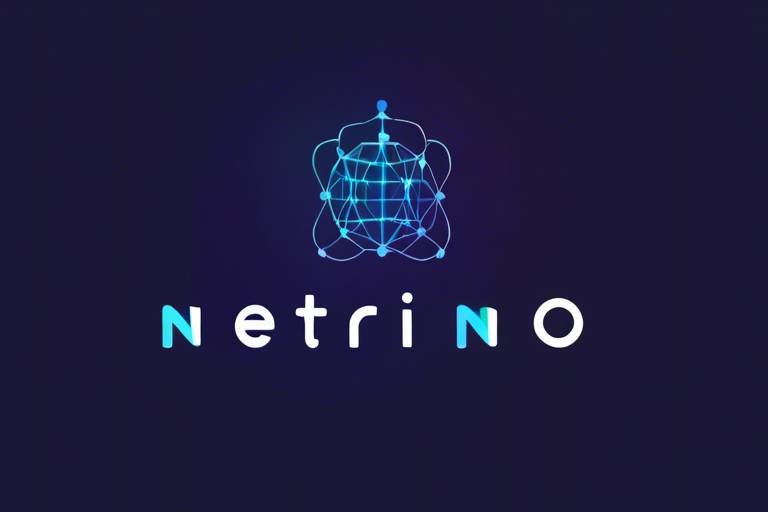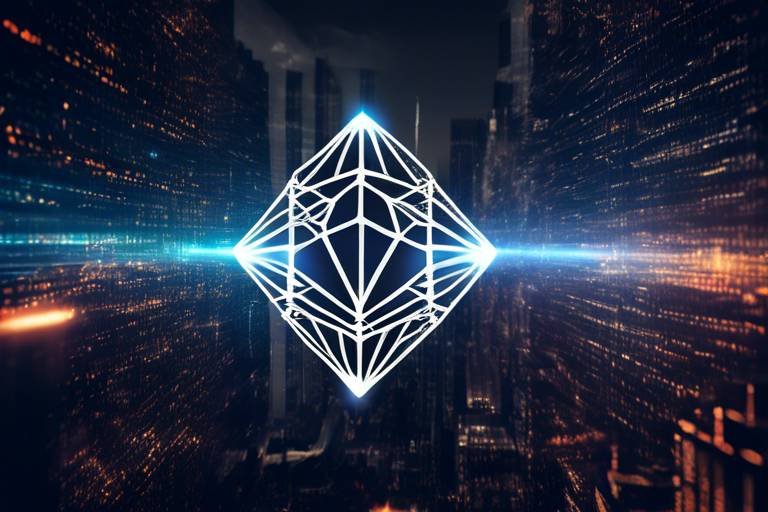Neutrino - A Decentralized Stablecoin Platform
Welcome to the world of Neutrino, a groundbreaking decentralized stablecoin platform that's changing the way we think about digital currencies. Imagine a currency that maintains its value regardless of market fluctuations, providing a reliable means of exchange in the ever-volatile cryptocurrency landscape. Neutrino aims to be that beacon of stability, leveraging cutting-edge technology and innovative mechanisms to create a seamless experience for users. But what exactly does this mean for you? Let's dive in!
At its core, Neutrino is designed to provide a stable and trustworthy digital currency that can be used for various transactions without the fear of losing value overnight. This is particularly important in a world where traditional currencies can be affected by inflation and other economic pressures. By utilizing a decentralized approach, Neutrino ensures that no single entity can manipulate its value, promoting a fair and transparent financial ecosystem.
One of the standout features of Neutrino is its ability to integrate with other blockchain projects, allowing for a broader range of applications and use cases. This interoperability not only enhances its functionality but also strengthens the overall cryptocurrency market by encouraging collaboration among different platforms. As we explore the various facets of Neutrino, you'll see how it not only aims to be a stablecoin but also a fundamental building block in the decentralized finance (DeFi) landscape.
In the following sections, we will unpack the technology that powers Neutrino, examine its smart contracts, and discuss the liquidity mechanisms that keep it stable. Whether you're a seasoned crypto enthusiast or just starting your journey, understanding Neutrino's framework will equip you with the knowledge to navigate this exciting new frontier.
- What is Neutrino? Neutrino is a decentralized stablecoin platform designed to maintain a stable value against reserve assets.
- How does Neutrino ensure stability? Neutrino employs various mechanisms and strategies to maintain market stability.
- Can Neutrino be integrated with other platforms? Yes, Neutrino is designed to be interoperable with other blockchain projects.
- What technologies does Neutrino use? Neutrino leverages advanced blockchain technology and smart contracts to ensure security and efficiency.
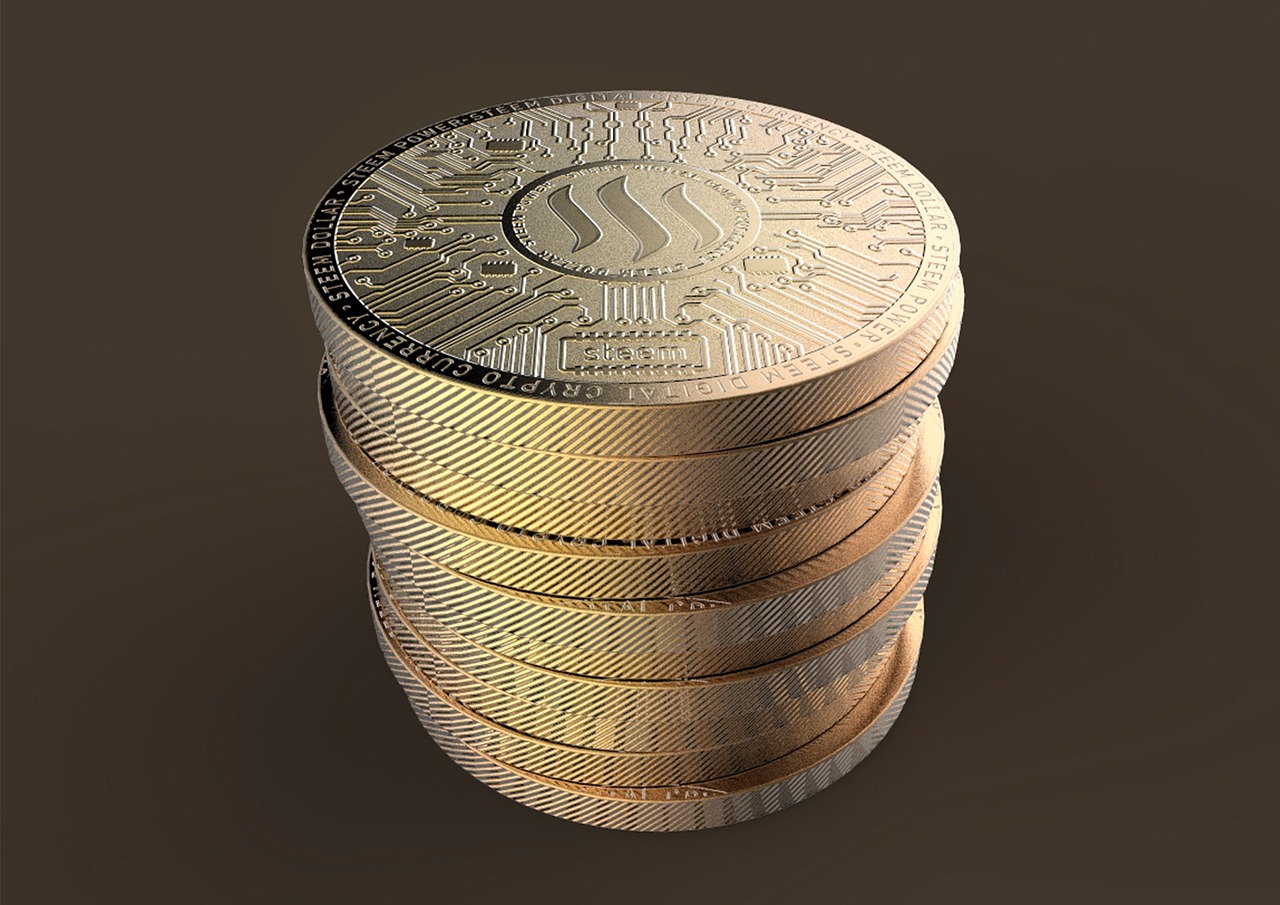
Understanding Stablecoins
Stablecoins are a fascinating innovation in the world of cryptocurrency, designed to maintain a stable value against a reserve asset, such as fiat currencies like the US dollar or commodities like gold. Imagine a bridge connecting the volatile world of cryptocurrencies with the stability of traditional finance. This bridge is what stablecoins offer, allowing users to enjoy the benefits of digital currencies without the wild price swings that often characterize them.
So, why are stablecoins important? Well, they serve multiple purposes in the broader cryptocurrency ecosystem. They provide a safe harbor for investors looking to park their funds during turbulent market conditions. Instead of converting their assets back into fiat currency, which can be a hassle and often incurs fees, users can simply convert their cryptocurrencies into stablecoins. This way, they can maintain liquidity while avoiding the volatility associated with other cryptocurrencies.
Stablecoins can be categorized into three main types:
- Fiat-collateralized stablecoins: These are backed by a reserve of fiat currency, typically held in a bank account. For every stablecoin issued, there is a corresponding dollar, euro, or other fiat currency held in reserve.
- Crypto-collateralized stablecoins: These are backed by other cryptocurrencies, which are locked in smart contracts. They often require over-collateralization to account for the volatility of the backing assets.
- Algorithmic stablecoins: Instead of being backed by any collateral, these stablecoins use algorithms to control the supply and demand, adjusting the number of coins in circulation to maintain a stable value.
One of the most significant advantages of stablecoins is their ability to facilitate transactions and remittances across borders with minimal fees and instant settlement times. This feature makes them particularly appealing for users in countries with unstable currencies or limited access to banking services. In such scenarios, stablecoins can provide a reliable means of transacting without the risks associated with local currencies.
In summary, stablecoins are a crucial element of the cryptocurrency landscape, providing stability, liquidity, and accessibility. They enable users to navigate the often-turbulent waters of the crypto market while enjoying the benefits of digital currencies. As we continue to explore the Neutrino platform, understanding stablecoins will help us appreciate the innovative solutions they bring to the table.
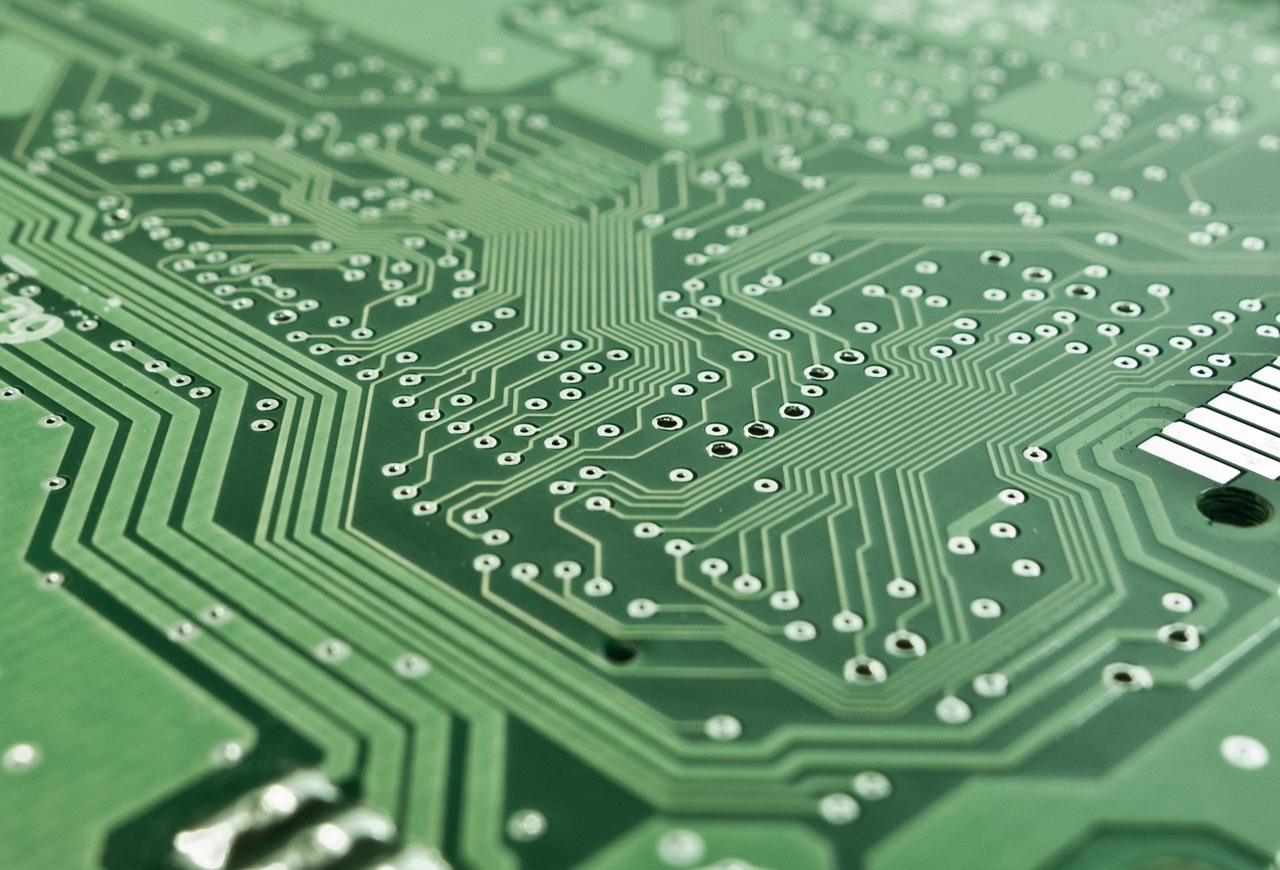
The Technology Behind Neutrino
Neutrino is not just another player in the crowded field of cryptocurrency; it represents a significant leap forward in how we think about stablecoins. At its core, Neutrino leverages advanced blockchain technology to create a platform that is both secure and decentralized. This technological foundation is crucial, as it ensures that users can transact with confidence, knowing that their assets are protected from malicious actors and systemic failures.
One of the standout features of Neutrino's technology is its use of decentralized oracles. These oracles act as bridges between the blockchain and the real world, providing real-time data that is essential for maintaining the stability of the stablecoin. Imagine trying to keep a car on the road without a steering wheel; that’s what it would be like to operate a stablecoin without accurate data feeds. Neutrino's oracles ensure that the platform can react swiftly to market changes, keeping the stablecoin's value aligned with its reserve asset.
Furthermore, Neutrino utilizes a unique collateralization mechanism that allows users to mint stablecoins by locking up their assets. This not only provides liquidity but also ensures that the value of the stablecoin remains stable. The underlying technology supports various types of collateral, which means users have flexibility in how they engage with the platform. This is akin to having a buffet of options at your favorite restaurant—you can choose what works best for you!
In addition to these features, Neutrino is built on a layered architecture that separates different functions of the platform. This modular approach not only enhances security but also allows for easier upgrades and scalability. For instance, if a new feature needs to be added, developers can do so without disrupting the entire system. It’s like upgrading your smartphone; you can get the latest features without having to buy a whole new device.
To give you a clearer picture, here’s a brief overview of the key components that make up Neutrino's technology:
| Component | Description |
|---|---|
| Decentralized Oracles | Provide real-time data for maintaining stablecoin value. |
| Collateralization Mechanism | Allows users to mint stablecoins by locking up assets. |
| Layered Architecture | Enhances security and scalability by separating functions. |
In summary, Neutrino's technology is a blend of innovative features and robust security measures that together create a reliable platform for stablecoins. By harnessing the power of decentralized oracles, flexible collateralization, and a modular architecture, Neutrino not only meets the needs of today's cryptocurrency users but also sets the stage for future advancements in the decentralized finance (DeFi) landscape.
- What makes Neutrino different from other stablecoins?
Neutrino's use of decentralized oracles and flexible collateralization gives it a unique edge in maintaining stability and security. - How does Neutrino ensure the security of users' assets?
Through its layered architecture and smart contracts, Neutrino provides robust security measures to protect user assets. - Can I use different types of collateral on Neutrino?
Yes, Neutrino supports various types of collateral, allowing users to choose what best fits their needs.
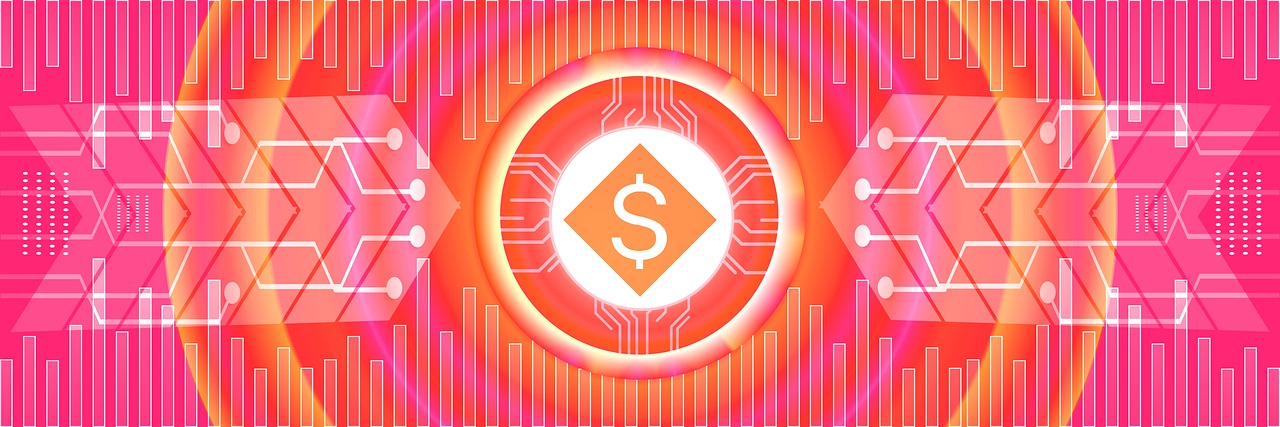
Smart Contracts in Neutrino
Smart contracts are the backbone of the Neutrino platform, acting as self-executing contracts with the terms of the agreement directly written into code. Imagine them as digital vending machines; you input your selection (or conditions), and out comes the product (or result) without needing a middleman. This automation not only speeds up transactions but also significantly reduces the chances of human error or fraud. In the world of decentralized finance (DeFi), where trust is often a scarce resource, smart contracts provide a level of assurance that is vital for user confidence.
At its core, Neutrino's smart contracts facilitate a variety of functions that enhance the overall user experience. For instance, they allow for the seamless exchange of stablecoins, automate governance processes, and enable complex financial instruments like decentralized lending and borrowing. By eliminating intermediaries, users can engage directly with the platform, thus ensuring that their transactions are both efficient and transparent. This creates a more inclusive financial ecosystem where anyone with an internet connection can participate.
One of the standout features of Neutrino’s smart contracts is their ability to adapt to changing market conditions. Through sophisticated algorithms, these contracts can automatically adjust parameters to maintain stability and ensure liquidity. This dynamic capability is crucial in the volatile world of cryptocurrencies, where market fluctuations can lead to rapid changes in asset values. In essence, Neutrino's smart contracts act as a safety net, providing users with peace of mind knowing that their investments are safeguarded against sudden market shifts.
To illustrate how smart contracts operate within Neutrino, consider the following table:
| Function | Description |
|---|---|
| Automated Transactions | Facilitates instant transfers of stablecoins without manual intervention. |
| Governance | Allows users to vote on platform changes and improvements directly through the contract. |
| Liquidity Management | Automatically adjusts liquidity pools based on real-time market data. |
Moreover, security is a significant concern when it comes to smart contracts. Neutrino employs rigorous testing and auditing processes to ensure that its smart contracts are not only functional but also secure from potential vulnerabilities. This proactive approach to security means that users can engage with the platform confidently, knowing that their assets are protected by robust technology.
In summary, smart contracts play a pivotal role in the Neutrino ecosystem, driving efficiency, security, and user engagement. By leveraging these innovative contracts, Neutrino is not just creating a stablecoin platform; it is building a comprehensive financial system that empowers users and fosters trust in the decentralized economy.
- What are smart contracts? Smart contracts are self-executing contracts with the terms written into code, allowing for automated transactions.
- How does Neutrino ensure the security of its smart contracts? Neutrino employs rigorous testing and auditing processes to identify and mitigate vulnerabilities.
- Can I participate in governance through smart contracts? Yes, Neutrino allows users to vote on platform changes directly through its smart contracts.

Security Features of Smart Contracts
When it comes to the world of cryptocurrency, security is not just an option; it's a necessity. Neutrino's smart contracts are designed with advanced security features that aim to protect users and their assets from potential threats. These contracts are essentially self-executing agreements with the terms of the agreement directly written into code, which minimizes the risk of human error or manipulation. But how does Neutrino ensure that these contracts remain secure?
First and foremost, the use of cryptographic techniques plays a crucial role in safeguarding the integrity of these smart contracts. Each transaction is encrypted, making it nearly impossible for unauthorized entities to alter or tamper with the data. Additionally, the decentralized nature of the Neutrino platform means that no single point of failure exists. This is akin to having multiple locks on your front door; even if one lock is compromised, others remain secure.
Another key feature is the auditability of smart contracts. All transactions on the Neutrino platform are recorded on the blockchain, providing a transparent and immutable ledger. This transparency allows for third-party audits, which can identify vulnerabilities before they can be exploited. In a way, it's like having a security camera in a bank; it not only deters potential thieves but also provides evidence in case of a breach.
Moreover, Neutrino employs formal verification methods for its smart contracts. This rigorous process involves mathematically proving that the code behaves as intended, eliminating bugs and vulnerabilities before deployment. Just as engineers test a bridge for structural integrity before allowing traffic, Neutrino ensures that its smart contracts can withstand the pressures of real-world use.
Furthermore, the platform incorporates multi-signature wallets for added security. This means that multiple parties must approve a transaction before it can be executed, reducing the risk of unauthorized access. Imagine needing several keys to open a safe; this multi-layered approach significantly enhances the security of users' funds.
In addition to these features, Neutrino also actively monitors its smart contracts for any unusual activity or potential threats. The platform uses advanced algorithms and machine learning techniques to detect anomalies, ensuring that any suspicious activity is addressed promptly. This proactive approach is much like having a security team on standby, ready to respond at a moment's notice.
In conclusion, the security features of Neutrino's smart contracts are designed to create a safe and trustworthy environment for users. With cryptographic protections, auditability, formal verification, multi-signature wallets, and continuous monitoring, Neutrino stands as a robust platform in the decentralized finance landscape. As we continue to embrace the future of cryptocurrency, it's reassuring to know that platforms like Neutrino prioritize the security of their users.
- What are smart contracts? Smart contracts are self-executing contracts where the terms are directly written into code, ensuring automatic execution when conditions are met.
- How does Neutrino ensure the security of its smart contracts? Neutrino utilizes cryptographic techniques, formal verification, multi-signature wallets, and continuous monitoring to enhance security.
- Can I audit Neutrino's smart contracts? Yes, all transactions are recorded on the blockchain, allowing for third-party audits and ensuring transparency.
- What happens if a vulnerability is found in a smart contract? Neutrino actively monitors for unusual activity and can address vulnerabilities promptly to protect user assets.
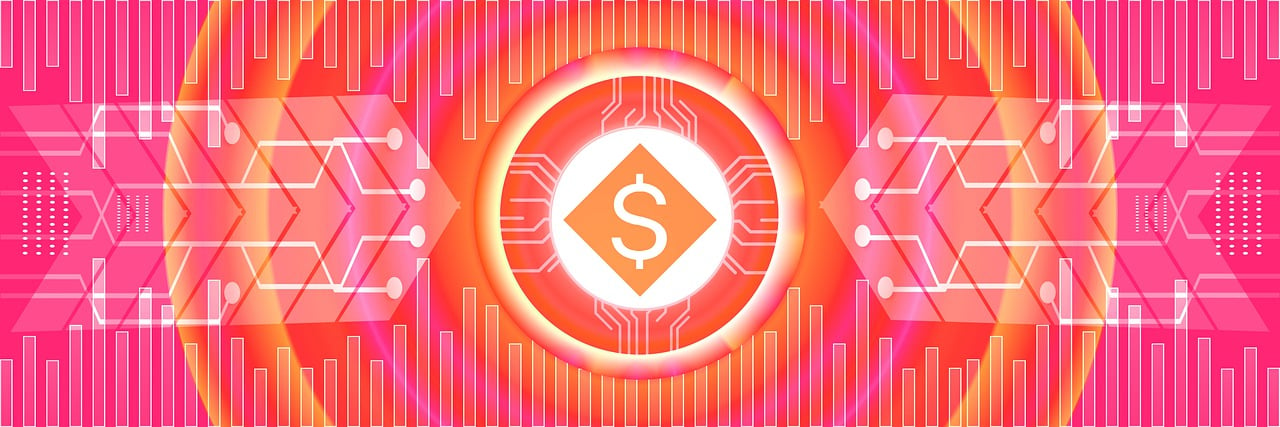
Use Cases for Smart Contracts
Smart contracts are not just a buzzword in the cryptocurrency world; they are the backbone of Neutrino's functionality. These self-executing contracts with the terms of the agreement directly written into code allow for a plethora of applications that can revolutionize the way we conduct transactions. Imagine a world where trust is not an issue, and everything is automated—this is the promise of smart contracts on the Neutrino platform.
One of the most compelling use cases for smart contracts is in the realm of decentralized finance (DeFi). Here, smart contracts can automate lending and borrowing processes without the need for a traditional bank. For instance, users can lock up their assets as collateral and instantly take out loans, all managed by the smart contract's code. This not only speeds up the process but also minimizes the risk of human error or fraud.
Additionally, smart contracts on Neutrino can facilitate automated payments. Consider a scenario where a freelancer completes a project. Instead of waiting for the client to initiate payment, a smart contract can automatically release funds once the project milestones are met. This ensures that both parties fulfill their obligations, creating a win-win situation.
Moreover, smart contracts can be utilized in supply chain management. By embedding tracking information into a smart contract, companies can maintain transparency throughout the supply chain. For example, a smart contract can automatically trigger payments to suppliers once goods are delivered and verified, reducing delays and disputes.
Furthermore, the potential for insurance claims processing is another exciting application. Smart contracts can streamline the claims process by automatically verifying the conditions of a claim and releasing funds without the need for extensive paperwork and manual checks. This not only saves time but also enhances customer satisfaction by expediting the payout process.
To summarize, the use cases for smart contracts on the Neutrino platform are vast and varied. From enabling DeFi applications to automating payments, enhancing supply chain transparency, and simplifying insurance claims, smart contracts are set to redefine how we interact with digital assets. The ability to execute agreements without intermediaries not only fosters trust but also paves the way for a more efficient and transparent economy.
- What are smart contracts? Smart contracts are self-executing contracts where the terms of the agreement are directly written into code, allowing for automated transactions without intermediaries.
- How do smart contracts enhance security? Smart contracts operate on blockchain technology, which is inherently secure and tamper-proof, ensuring that transactions cannot be altered once executed.
- What benefits do smart contracts offer in DeFi? Smart contracts in DeFi enable automated lending, borrowing, and trading, reducing the need for traditional financial institutions and increasing accessibility.
- Can smart contracts be used in supply chain management? Yes, smart contracts can track the movement of goods and automate payments, enhancing transparency and efficiency in supply chains.

Decentralization Benefits
When we talk about decentralization, we're diving into a concept that fundamentally changes how we interact with money and value. Imagine a world where no single entity has the power to control your assets or dictate your financial decisions. That's the beauty of decentralization, especially when it comes to platforms like Neutrino. By distributing power across a network, Neutrino ensures that users have greater control over their funds, which is a significant step away from traditional finance where banks and corporations often hold the reins.
One of the most compelling benefits of decentralization is increased security. In a decentralized system, data is not stored in a single location, making it much harder for hackers to exploit vulnerabilities. Each transaction on the Neutrino platform is recorded on a blockchain, which is inherently secure due to its cryptographic nature. This means your assets are less susceptible to fraud and theft, providing users with peace of mind. In fact, studies have shown that decentralized platforms can reduce the risk of hacks significantly compared to their centralized counterparts.
Moreover, decentralization fosters transparency. Every transaction on the Neutrino platform is visible to all participants, creating an open environment where users can verify the integrity of the system. This transparency builds trust among users, as they can independently audit transactions without relying on a third party. It’s like having a community potluck where everyone can see what’s being served, rather than a secret recipe that only one chef knows. This openness not only enhances user confidence but also encourages more people to participate in the ecosystem.
Another critical advantage is resilience. When a platform is decentralized, it’s less likely to experience downtime or systemic failures. If one node in the network goes down, the rest continue to operate seamlessly. This is akin to a decentralized power grid where if one line fails, the rest can still deliver electricity to homes. In the world of finance, this means that Neutrino can maintain operations even in the face of technical issues or external attacks, ensuring that users can access their funds whenever they need them.
Decentralization also promotes financial inclusion. With traditional banking systems, many people are left out due to geographical, economic, or social barriers. Neutrino, however, opens the doors to anyone with internet access, allowing users from all walks of life to participate in the financial system. It's like providing a key to a locked door that was previously inaccessible to many. This inclusivity not only empowers individuals but also drives economic growth by enabling more people to engage in commerce.
In summary, the benefits of decentralization in platforms like Neutrino are vast and transformative. From enhanced security and transparency to resilience and financial inclusion, decentralization is not just a buzzword; it’s a revolutionary shift that can redefine our relationship with money. As we continue to explore the potential of decentralized technologies, it’s clear that Neutrino is at the forefront of this exciting movement, paving the way for a more equitable and secure financial landscape.
- What is Neutrino? Neutrino is a decentralized stablecoin platform that leverages blockchain technology to provide users with a secure and efficient way to transact.
- How does decentralization benefit users? Decentralization enhances security, transparency, resilience, and financial inclusion, giving users greater control over their assets.
- Can I trust decentralized platforms? Yes, decentralized platforms like Neutrino are designed to be transparent and secure, making them less susceptible to fraud and manipulation.
- What role do smart contracts play in Neutrino? Smart contracts automate processes and ensure trust within the platform, facilitating secure and efficient transactions.
- How does Neutrino ensure liquidity? Neutrino employs various mechanisms to maintain liquidity, which is crucial for the stability of its stablecoin.
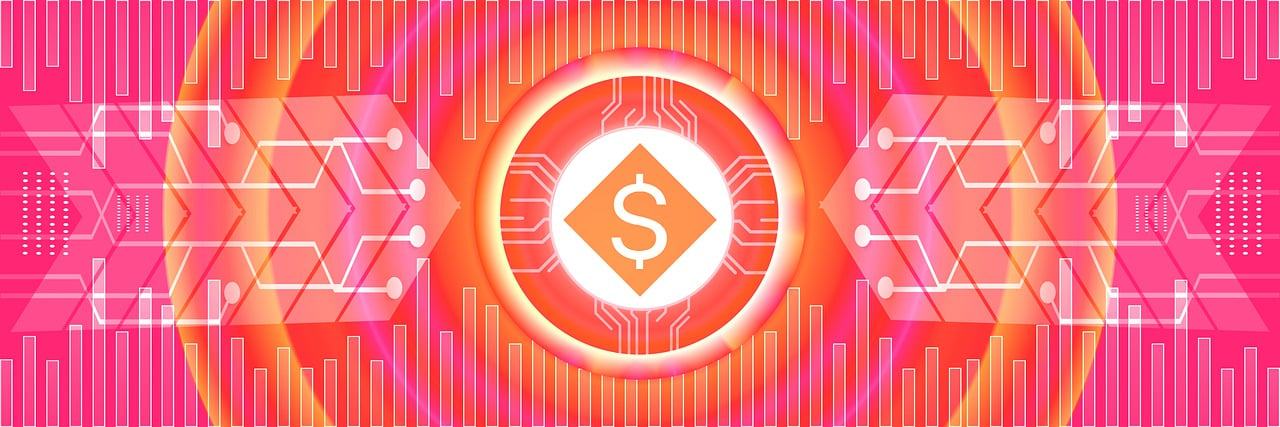
Liquidity Mechanisms
Liquidity is the lifeblood of any stablecoin platform, and Neutrino understands this fundamental principle. Without adequate liquidity, even the most innovative cryptocurrency can falter, leading to price volatility that undermines its core purpose. So, how does Neutrino ensure that its stablecoin remains liquid, allowing users to buy, sell, or trade without hesitation? The answer lies in a combination of technological innovations and strategic partnerships that create a seamless experience for users.
One of the primary mechanisms Neutrino employs to maintain liquidity is its integration with various decentralized exchanges (DEXs). By connecting with multiple DEXs, Neutrino allows users to trade their stablecoins easily, which enhances the overall liquidity of the platform. This integration means that users can access a wide range of trading pairs, ensuring that there are always buyers and sellers available. Imagine walking into a bustling marketplace where vendors are eager to trade; that’s the kind of environment Neutrino aims to create in the digital space.
Moreover, Neutrino leverages an innovative liquidity pool system. Here's how it works: users can contribute their stablecoins to liquidity pools, which are then utilized for various trading activities. In return for providing liquidity, users earn rewards, creating a win-win situation. This incentivization not only encourages users to participate but also ensures that there are sufficient funds available for transactions. It’s like being part of a community garden where everyone contributes and reaps the benefits of a bountiful harvest.
To illustrate this further, let’s take a look at the following table that outlines the key components of Neutrino's liquidity mechanisms:
| Liquidity Mechanism | Description | Benefits |
|---|---|---|
| Integration with DEXs | Connects users to various decentralized exchanges for trading. | Improved access to buyers and sellers; enhanced trading opportunities. |
| Liquidity Pools | Users can contribute stablecoins to pools for trading activities. | Earn rewards; increased liquidity for transactions. |
| Market Maker Partnerships | Collaborations with market makers to ensure constant liquidity. | Stability in pricing; reduced slippage for users. |
Additionally, Neutrino focuses on establishing partnerships with market makers. These market makers play a crucial role in providing liquidity by ensuring that there are always orders available in the market. This partnership is akin to having a reliable friend who always has your back; they step in when needed, ensuring that trades can occur smoothly and at stable prices. This is particularly important during times of high volatility when users might be anxious about executing trades.
In summary, Neutrino's approach to liquidity is multifaceted, combining technological innovations with community engagement and strategic partnerships. By fostering a vibrant trading environment, Neutrino not only enhances user experience but also solidifies its position in the competitive landscape of decentralized finance. As the platform continues to evolve, its commitment to maintaining liquidity will undoubtedly play a pivotal role in its success.
- What is liquidity in the context of stablecoins? Liquidity refers to the ease with which stablecoins can be bought or sold without causing significant price changes.
- How does Neutrino ensure liquidity? Neutrino ensures liquidity through integration with decentralized exchanges, liquidity pools, and partnerships with market makers.
- Can I earn rewards by providing liquidity on Neutrino? Yes, users can earn rewards by contributing their stablecoins to liquidity pools.

Market Stability Strategies
When it comes to stablecoins, maintaining a consistent value is akin to keeping a tightrope walker balanced. Neutrino understands this challenge and employs a variety of to ensure that its stablecoin remains resilient against the turbulence often found in the cryptocurrency market. One of the primary methods Neutrino uses is the integration of algorithmic mechanisms that adjust the supply of the stablecoin based on market demand. This dynamic adjustment helps to counteract fluctuations and maintain a steady value.
Another strategy revolves around the use of collateralization. By backing its stablecoin with a diverse range of assets, Neutrino creates a safety net that protects against extreme market volatility. This collateralization not only enhances trust among users but also provides a buffer that can absorb shocks. Imagine having a well-stocked pantry during a storm; you’re prepared for whatever comes your way. Similarly, Neutrino’s collateral acts as a safeguard, ensuring that even in turbulent times, users can rely on the stability of their assets.
Moreover, Neutrino leverages liquidity pools to enhance the market's ability to absorb sudden changes in demand. These pools act like reservoirs, allowing for a steady flow of transactions without causing significant price swings. By incentivizing users to contribute to these pools, Neutrino not only increases liquidity but also fosters a community of engaged participants who have a vested interest in maintaining the platform's stability.
To illustrate these strategies, consider the following table that summarizes the key components of Neutrino's approach to market stability:
| Strategy | Description | Benefits |
|---|---|---|
| Algorithmic Supply Adjustment | Automatically adjusts the supply based on market demand. | Helps maintain a stable value during fluctuations. |
| Collateralization | Backed by a diverse range of assets. | Provides a buffer against market volatility. |
| Liquidity Pools | Reservoirs of funds to facilitate transactions. | Enhances liquidity and reduces price swings. |
In addition to these strategies, Neutrino also employs a strong governance model that encourages community participation in decision-making processes. This model allows users to vote on key issues, ensuring that the platform evolves in a way that meets the needs of its community. Just like a town hall meeting where everyone's voice matters, Neutrino's governance structure fosters a sense of ownership and accountability.
Ultimately, Neutrino's market stability strategies are designed to create a resilient ecosystem where users can confidently transact without the fear of sudden price drops. By combining algorithmic adjustments, collateralization, liquidity pools, and community governance, Neutrino positions itself as a leader in the stablecoin market, ready to weather any storm that may come its way.
- What is Neutrino? Neutrino is a decentralized stablecoin platform that aims to provide a stable and secure cryptocurrency experience.
- How does Neutrino maintain stability? Neutrino employs algorithmic supply adjustments, collateralization, and liquidity pools to maintain the value of its stablecoin.
- What are liquidity pools? Liquidity pools are reserves of funds that facilitate transactions and help absorb market fluctuations.
- Is Neutrino secure? Yes, Neutrino implements advanced security measures, including smart contracts, to protect users and their assets.
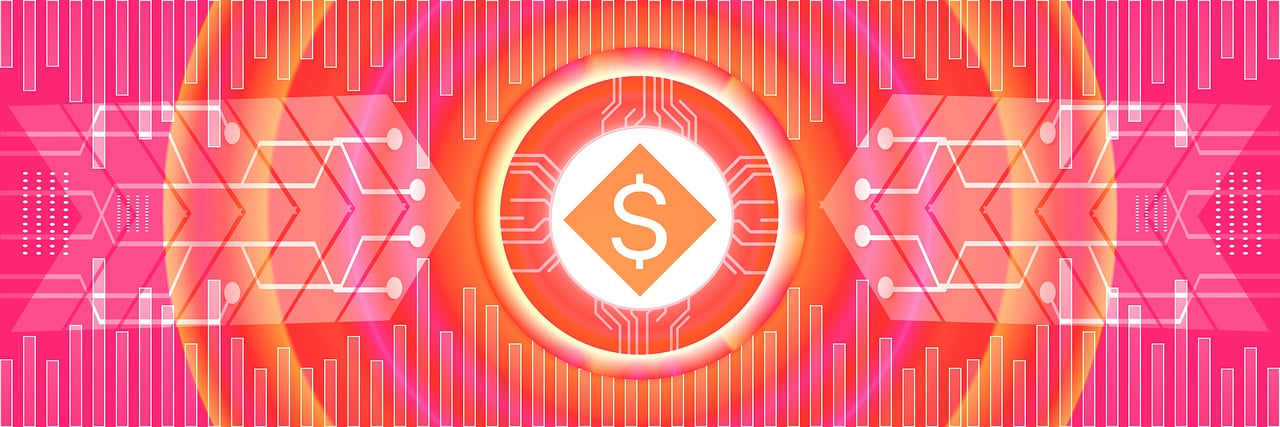
Future of Neutrino
The future of Neutrino is looking exceptionally bright, with a plethora of opportunities on the horizon. As the decentralized finance (DeFi) landscape continues to evolve, Neutrino is poised to play a pivotal role in shaping the way we think about stablecoins and their functionalities. Imagine a world where financial transactions are seamless, secure, and devoid of intermediaries—this is the vision that Neutrino is working towards. With its innovative technology and user-centric approach, Neutrino is not just another stablecoin platform; it’s a gateway to a new era of financial freedom.
One of the most exciting aspects of Neutrino’s future involves its potential for integration with other DeFi projects. As more platforms emerge, the ability to interact and collaborate will be crucial. Neutrino’s architecture allows for easy integration, making it an attractive option for developers looking to build on a stable foundation. This interoperability could lead to a flourishing ecosystem where users benefit from enhanced services, better liquidity, and reduced transaction costs.
Furthermore, as regulatory frameworks around cryptocurrencies become clearer, Neutrino stands to gain from its commitment to compliance and transparency. By working closely with regulators and adhering to best practices, Neutrino can establish itself as a trusted player in the market. This could encourage more users and institutions to adopt the platform, further driving its growth and acceptance.
Another critical factor in Neutrino’s future is its community. The strength of a decentralized platform often lies in its user base, and Neutrino is no exception. By fostering a vibrant community of developers, users, and stakeholders, Neutrino can ensure that it remains responsive to the needs and desires of its users. Community-driven initiatives could lead to innovative features and enhancements that keep the platform ahead of the curve.
Looking ahead, we can also expect Neutrino to explore various use cases beyond simple transactions. With the rise of decentralized applications (dApps), Neutrino’s stablecoin could serve as a backbone for numerous applications, from lending and borrowing platforms to decentralized exchanges. The versatility of Neutrino’s stablecoin could make it a go-to option for developers looking to create impactful solutions in the DeFi space.
In summary, the future of Neutrino is not just about being a player in the stablecoin market; it’s about revolutionizing the entire financial landscape. With its commitment to innovation, community engagement, and regulatory compliance, Neutrino is set to become a cornerstone of the decentralized economy. The possibilities are endless, and as we move forward, it will be fascinating to see how Neutrino continues to adapt and grow in this dynamic environment.
- What is Neutrino? Neutrino is a decentralized stablecoin platform designed to maintain a stable value against reserve assets while leveraging advanced blockchain technology.
- How does Neutrino ensure liquidity? Neutrino employs various mechanisms, including market-making strategies and partnerships with liquidity providers, to maintain liquidity in its ecosystem.
- What role do smart contracts play in Neutrino? Smart contracts automate processes within Neutrino, ensuring trust and efficiency in transactions and operations.
- How can I get involved with Neutrino? Users can participate by using Neutrino’s services, joining the community forums, or contributing to development initiatives.
Frequently Asked Questions
- What is Neutrino?
Neutrino is a decentralized stablecoin platform that aims to provide a stable digital currency experience by leveraging advanced blockchain technology. It focuses on maintaining a stable value against reserve assets, making it a reliable option in the volatile cryptocurrency market.
- How do stablecoins work?
Stablecoins are designed to maintain a fixed value, usually pegged to a reserve asset like the US dollar. They achieve this stability through various mechanisms, such as collateralization or algorithmic adjustments, allowing users to transact without the fear of sudden price fluctuations.
- What technology underpins Neutrino?
Neutrino utilizes cutting-edge blockchain technology to ensure security and decentralization. This technology forms the backbone of its operations, enabling secure transactions and the creation of smart contracts that automate processes and enhance trust among users.
- What role do smart contracts play in Neutrino?
Smart contracts are crucial to Neutrino's functionality, as they automate various processes, ensuring efficiency and transparency. These self-executing contracts facilitate transactions without the need for intermediaries, reducing costs and increasing trust within the platform.
- How does Neutrino ensure the security of its smart contracts?
Neutrino implements several security measures within its smart contracts to protect users and their assets. These measures include rigorous testing, audits, and the use of secure coding practices to prevent vulnerabilities and potential exploits.
- What are some use cases for Neutrino's smart contracts?
Neutrino's smart contracts can be applied in various scenarios, such as decentralized finance (DeFi) applications, automated trading systems, and peer-to-peer transactions. These use cases enhance the platform's functionality and open up new opportunities for users.
- Why is decentralization important for Neutrino?
Decentralization is a core principle of Neutrino, as it reduces reliance on a single entity and enhances user control over their assets. This approach fosters a more resilient and transparent financial ecosystem, where users can transact freely without intermediaries.
- How does Neutrino maintain liquidity?
Neutrino employs various liquidity mechanisms, such as liquidity pools and market-making strategies, to ensure that users can easily buy and sell stablecoins without significant price impact. This is vital for maintaining a stable trading environment.
- What strategies does Neutrino use to ensure market stability?
To preserve market stability, Neutrino implements strategies like algorithmic adjustments and collateral management. These strategies help maintain the stablecoin's value, ensuring it remains pegged to its reserve asset regardless of market fluctuations.
- What does the future hold for Neutrino?
The future of Neutrino looks promising, with potential developments in features, partnerships, and integration into the broader decentralized finance landscape. As the platform evolves, it may play a significant role in shaping the future of stablecoins and the cryptocurrency market.

